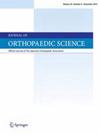Diaphyseal forearm fracture management in adolescent patients from 2011 to 2020: A multicenter study of surgery and regional anesthesia trends
IF 1.5
4区 医学
Q3 ORTHOPEDICS
引用次数: 0
Abstract
Background
Diaphyseal forearm fractures are common traumatic injuries among children. There has been much debate on the use of intramedullary nailing (IMN) or plate fixation in the adolescent population (10–16 years of age). Furthermore, as ultrasound technology has advanced, the safety and efficacy of ultrasound-guided axillary brachial plexus block for children has dramatically improved. Therefore, anesthesia options for adolescent patients have increased in recent years. This study aimed to investigate recent surgical and regional anesthesia trends of diaphyseal forearm fractures in patients 10 to 16 years of age in Japan through a multicenter epidemiological survey from 2011 to 2020.
Methods
This retrospective, multicenter study included 226 pediatric patients with diaphyseal forearm fracture aged 10–16 years treated from January 2011 to December 2020. We divided the patients into four groups according to the period in which they were treated: early (2011–2013), middle (2014–2016), late (2017–2019), and COVID-19 (2020). Information from medical records was used to investigate the number of surgeries, types of anesthesia administered, and internal fixation methods used for diaphyseal forearm fracture in adolescent patients during each period.
Results
The number of surgeries was generally constant in each period but decreased during the COVID-19 period. In the early, middle, late, and COVID-19 periods, the percentages of surgeries performed under regional anesthesia were 67.7, 85.5, 87.0, and 100% respectively (p = 0.003). During the same periods, the percentages of patients receiving IMN were 41.5, 49.3, 58.0, and 66.7%, respectively (p = 0.033).
Conclusion
The use of IMN and regional anesthesia to treat diaphyseal forearm fracture in patients 10 to 16 years of age steadily increased during the study period from 2011 to 2020. These results indicate that regional anesthesia is safe, effective, and well-tolerated by adolescent patients. The treatment strategy for diaphyseal forearm fractures in adolescents using regional anesthesia in combination with IMN worked well and was effective during COVID-19. Our evidence suggests this trend will continue. We anticipate that our findings can be extrapolated for upper extremity fractures in adolescent patients beyond the Tokai region of Japan where the study was based.
2011 年至 2020 年青少年患者的前臂骺骨折治疗:一项关于手术和区域麻醉趋势的多中心研究。
背景:前臂骨干骨折是儿童常见的外伤性损伤。关于在青少年人群(10-16岁)中使用髓内钉(IMN)或钢板固定存在很多争论。此外,随着超声技术的进步,超声引导下儿童腋窝臂丛神经阻滞的安全性和有效性得到了显著提高。因此,近年来,青少年患者的麻醉选择有所增加。本研究旨在通过2011年至2020年的多中心流行病学调查,探讨日本10至16岁患者前臂骨干骨折的手术和区域麻醉趋势。方法回顾性、多中心研究纳入226例2011年1月至2020年12月接受治疗的10-16岁儿童前臂骨干骨折患者。我们根据患者的治疗时间将患者分为四组:早期(2011-2013)、中期(2014-2016)、晚期(2017-2019)和COVID-19(2020)。来自医疗记录的信息用于调查青少年患者在每个时期内前臂骨干骨折的手术次数、麻醉类型和内固定方法。结果手术次数在各时期基本保持不变,但在新冠肺炎期间有所下降。在新冠肺炎早期、中期、晚期,区域麻醉下手术率分别为67.7、85.5%、87.0和100% (p = 0.003)。同期,接受IMN治疗的患者比例分别为41.5%、49.3%、58.0%和66.7% (p = 0.033)。结论2011 - 2020年研究期间,10 ~ 16岁前臂骨干骨折患者采用IMN +区域麻醉的比例稳步上升。这些结果表明,区域麻醉对青少年患者是安全、有效和耐受性良好的。区域麻醉联合IMN治疗青少年前臂骨干骨折效果良好,在COVID-19期间有效。我们的证据表明,这种趋势将继续下去。我们期望我们的研究结果可以外推到日本东海地区以外的青少年上肢骨折患者。
本文章由计算机程序翻译,如有差异,请以英文原文为准。
求助全文
约1分钟内获得全文
求助全文
来源期刊

Journal of Orthopaedic Science
医学-整形外科
CiteScore
3.00
自引率
0.00%
发文量
290
审稿时长
90 days
期刊介绍:
The Journal of Orthopaedic Science is the official peer-reviewed journal of the Japanese Orthopaedic Association. The journal publishes the latest researches and topical debates in all fields of clinical and experimental orthopaedics, including musculoskeletal medicine, sports medicine, locomotive syndrome, trauma, paediatrics, oncology and biomaterials, as well as basic researches.
 求助内容:
求助内容: 应助结果提醒方式:
应助结果提醒方式:


